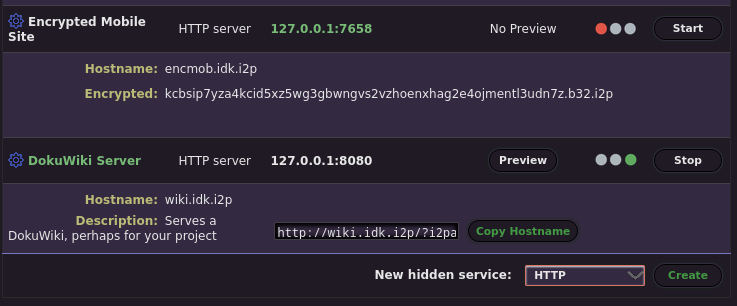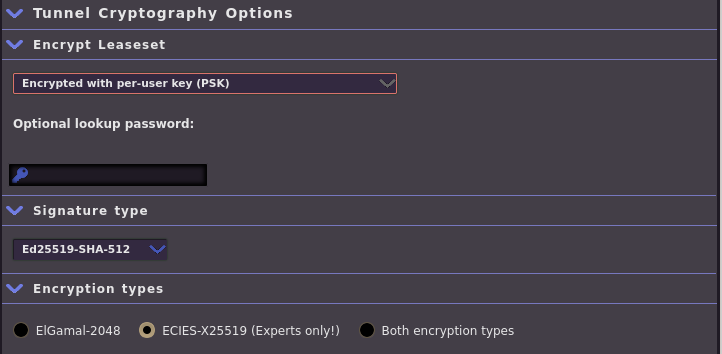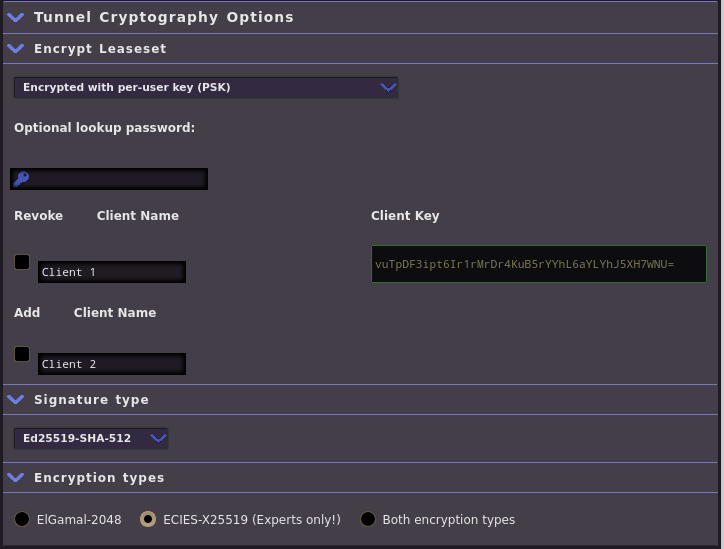It has been said in the past that I2P emphasizes support for Hidden Services, which is true in many ways. However, what this means to users, developers, and hidden service administrators isn't always the same. Encrypted LeaseSets and their use-cases provide a unique, practical window into how I2P makes hidden services more versatile, easier to administer, and how I2P extends on the Hidden Service concept to provide security benefits for potentially interesting use-cases.
What is a LeaseSet?
When you create a hidden service, you publish something called a "LeaseSet" to the I2P NetDB. The "LeaseSet" is, in the simplest terms, what other I2P users need to discover "where" your hidden service is on the I2P Network. It contains "Leases" which identify tunnels that can be used to reach your hidden service, and the public key of your destination, which clients will encrypt messages to. This type of hidden service is reachable by anyone who has the address, which is probably the most common use case for now.
Sometimes, you might not want to allow your hidden services to be accessible by anyone, though. Some people use hidden services as a way of accessing an SSH server on a home PC, or to stitch together a network of IOT Devices. In these cases it's not necessary, and may be counter-productive, to make your hidden service accessible to everyone one the I2P Network. This is where "Encrypted LeaseSets" come into play.
Using Encrypted LeaseSets to Safely Access a Router Console
As a general rule, the more complex information a service has access to about your device, the more dangerous it is to expose that service to the Internet or indeed, to a Hidden Service network like I2P. If you want to expose such a service, you need to protect it with something like a password, or, in the case of I2P, a much more thorough and secure option could be an Encrypted LeaseSet.
Before continuing, please read and understand that if you do the following procedure without an Encrypted LeaseSet, you will be defeating the security of your I2P router. Do not configure access to your router console over I2P without an Encrypted LeaseSet. Additionally, do not share your Encrypted LeaseSet PSK's with any devices you do not control.
One such service which is useful to share over I2P, but ONLY with an Encrypted LeaseSet, is the I2P router console itself. Exposing the I2P router console on one machine to I2P with an Encrypted LeaseSet allows another machine with a browser to administer the remote I2P instance. I find this useful for remotely monitoring my regular I2P Services. It could also be used to monitor a server which is used to seed a torrent long-term as a way to access I2PSnark.
For as long as it takes to explain them, setting up an Encrypted LeaseSet is straightforward to configure via the Hidden Services Manager UI.
On the "Server"

Start by opening the Hidden Services Manager at http://127.0.0.1:7657/i2ptunnelmgr and scroll to the bottom of the section that says "I2P Hidden Services." Create a new hidden service with the host "127.0.0.1" and the port "7657" with these "Tunnel Cryptography Options" and save the hidden service.

Then, select your new tunnel from the Hidden Services Manager main page. The Tunnel Cryptography Options should now include your first Pre-Shared Key. Copy this down for the next step, along with the Encrypted Base32 Address of your tunnel.

On the "Client"
Now switch computers to the client which will connect to the hidden service, and visit the Keyring Configuration at http://127.0.0.1:7657/configkeyring to add the keys from earlier. Start by pasting the Base32 from the Server into the field labeled: "Full destination, name, Base32, or hash." Next, paste the Pre-Shared Key from the server into the "Encryption Key" field. Click save, and you're ready to securely visit the Hidden Service using an Encrypted LeaseSet.

Now You're Ready to Remotely Administer I2P
As you can see, I2P offers unique capabilities to Hidden Service Administrators which empower them to securely manage their I2P connections from anywhere in the world. Other Encrypted LeaseSets I keep on the same device for the same reason point to the SSH server, the Portainer instance I user to manage my service containers, and my personal NextCloud instance. With I2P, truly private, always reachable Self-Hosting is an achievable goal, in fact I think it's one of the things we're uniquely suited to, because of Encrypted LeaseSets. With them, I2P could become the key to securing self-hosted home automation or simply become the backbone of a new more private peer-to-peer web.


























